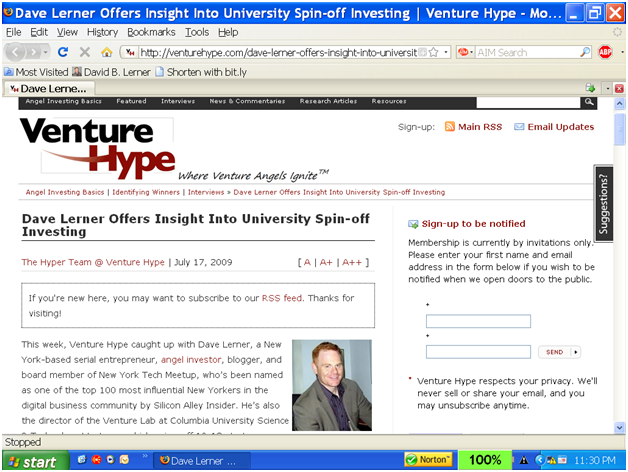

“It is not the clear-sighted who rule the world. Great achievements are accomplished in a blessed, warm fog.” -Conrad
For many years I was a subscriber to Conradiana, a tri-annual journal of all things related to the life and works of the venerable Joseph Conrad. It’s a terrific scholarly publication and I’ve recently made a note to myself to sign-up so as to start receiving it again. During this time I sometimes toyed with the idea of buckling down and submitting an article with my supposedly original insights into the much analyzed short work, the Secret Sharer. Having no university affiliation or professorship to bolster my credentials, however, I would have had to submit as a so-called “independent scholar”- a bit of a stretch to say the least. Recently though, upon reading two separate Conrad biographies by John Stape and Jeffrey Meyers respectively, I realized that perhaps I could presume to submit a work to Conradiana after all, and one on a topic where few professors could boast of similar expertise. The submission I have in mind would bear this simple title: Joseph Conrad as Angel Investor and Entrepreneur. As off-topic as this might come across, keep in mind that Conradiana editors have in the past published a title such as: Colonial Encounters and Cultural Contests: Confrontation of Orientalist and Occidentalist Discourses in “Karain: A Memory”. Or how about this beauty: The Power of Suggestion: Conrad, Professor Grasset, and French Medical Occultism. In fact, maybe I’ll do myself one better and petition the Kauffman Foundation to provide me with a generous grant to do a field study on the subject for twelve months so as to extrapolate what modern investors can learn from Conrad’s track record of international investment in a pre-IPO world? I’m sure they’ve funded worse boondoggles than this, no? (Well, maybe not).
Well, even if Conradiana and Kauffman should roundly reject my overtures, one thing is clear: Joseph Conrad was certainly a 19th century version of the modern angel investor and sometime entrepreneur. And true to his romantic nature, he was willing to get involved with the most daring ventures with his meager earnings- always with an eye for out-sized returns so as to liberate him from the indignities of life at sea and subsequently, those of having to eke out a living at his writing table.
According to Myers, Conrad’s various ventures included, “…. a whaling venture, piloting in the Suez Canal, Australian pearl fisheries, the Japanese navy, Canadian railroads, business in Newfoundland….”
From Stapes I learned that he actually started quite early in life and was involved in some illicit gun-running operations during his time as a young seaman in Marseille. Later, between stints on the Loch Etive and the Palestine in 1881, he and a former Captain of his hatched some sort of business together. Upon moving to London he bought an equity stake in the German shipping agent firm, Barr, Moering, and did some work for them out of their London offices from time to time. Then there was the South African gold mine debacle in 1895, an investment which allegedly failed only due to a shipwreck off the coast of Brittany which took the life of the entrepreneur Conrad had backed. Some six months before this and soon after the release of his first published work, Almayer’s Folly, another venture he funded failed, though exactly what type of investment it was remains a mystery, only obliquely referred to by him in a letter to Poradowska, a Polish cousin of his.
I believe that there is much in Conrad’s work and remarkable life story from which we entrepreneurs and investors can draw inspiration. He was from Poland and his original name was Jozef Teodor Konrad Korzeniowsky. He became perhaps the greatest artist ever to write a novel- and this in his third language. His writing too, was completely unique, positively foreign in its rhythms and structure. And this too struck me- that one of the greatest “English” writers did not start writing until he was approximately 40, heard English spoken for the first time on ships when he was 21 and spoke the language with a thick, sometimes indecipherable accent throughout his life. His is the story of determination if nothing else.
Who knows when I’ll get to writing this paper for Conradiana. And though Conrad’s investments and entrepreneurial exploits were rife with disappointment, it’s nevertheless been inspiring to catch a very real glimpse of his enterprising and romantic nature through the prism of his daring ventures and investments. Of course this essence is very palpable in his writing- but it’s there too in the story of his life - that same mind-set so many of us in the world of entrepreneurship, start-ups and angel investing share. His was a world of swirling winds and wooden ships, of long works written by candlelight, of isolation, imagination- and the mystery and promise of distant lands. Ours is a world of cloud-computing and silicon, of instant messaging, of twitter and the hunt for elusive sources of efficient clean energy. Great uncertainty and challenge characterize both worlds, as always. And though the surroundings may change, the striving and determination in us to innovate and overcome persists.
As Conrad himself wrote,
“It is not the clear-sighted who rule the world. Great achievements are accomplished in a blessed, warm fog.”
“Facing it — always facing it — that's the way to get through.”

![Reblog this post [with Zemanta]](http://img.zemanta.com/reblog_e.png?x-id=a20cb29e-3e8f-444e-af50-2f31b291ecec)


![Reblog this post [with Zemanta]](http://img.zemanta.com/reblog_e.png?x-id=32984989-2bb2-48c2-b7bf-af9642d55d00)

![Reblog this post [with Zemanta]](http://img.zemanta.com/reblog_e.png?x-id=63a60ab3-e708-4123-83b3-60bbbd15e840)

![Reblog this post [with Zemanta]](http://img.zemanta.com/reblog_e.png?x-id=e0d938e5-b776-446a-a18b-d58564d82187)

![Reblog this post [with Zemanta]](http://img.zemanta.com/reblog_e.png?x-id=21b60f0b-3054-4f5f-9840-5283d1265196)

![Reblog this post [with Zemanta]](http://img.zemanta.com/reblog_e.png?x-id=e20a161c-14ba-440b-b11b-9676282d599f)


![Reblog this post [with Zemanta]](http://img.zemanta.com/reblog_e.png?x-id=df763dab-3a57-4cea-9b66-fec185a949ed)
![Reblog this post [with Zemanta]](http://img.zemanta.com/reblog_e.png?x-id=be6830fd-1bc3-4abc-b48c-27777be61f1a)

![Reblog this post [with Zemanta]](http://img.zemanta.com/reblog_e.png?x-id=6066e92b-d349-43ee-9a25-0ffe5b1d93a8)

![Reblog this post [with Zemanta]](http://img.zemanta.com/reblog_e.png?x-id=c73e7729-f742-41de-ae53-2793ca169988)
![Reblog this post [with Zemanta]](http://img.zemanta.com/reblog_e.png?x-id=128cb0f9-5618-46e5-a05a-dd0d36c873ed)
![Reblog this post [with Zemanta]](http://img.zemanta.com/reblog_e.png?x-id=47f10be9-ab95-469e-a28c-05597c2ce313)
![Reblog this post [with Zemanta]](http://img.zemanta.com/reblog_e.png?x-id=2cbf0379-7ea4-46a8-9ba4-6fec054b2a0b)


![Reblog this post [with Zemanta]](http://img.zemanta.com/reblog_e.png?x-id=f3998b9c-2696-4d97-a595-02b0b916a315)

![Reblog this post [with Zemanta]](http://img.zemanta.com/reblog_e.png?x-id=be20dc8f-7988-41c9-a7e0-f6cc87f9ea23)
![Reblog this post [with Zemanta]](http://img.zemanta.com/reblog_e.png?x-id=298e780d-d114-4670-a3ac-9f93bce8092e)